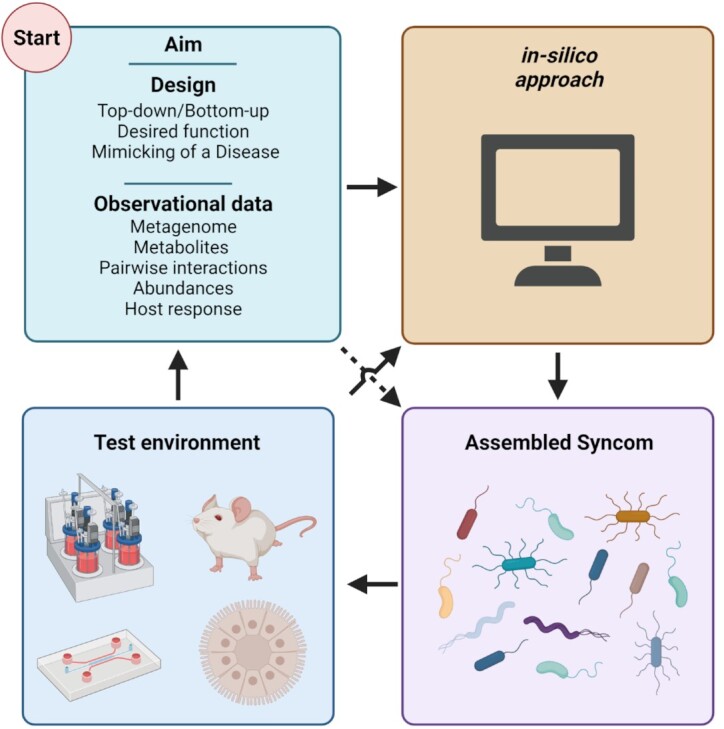Figure 3.

Design flowchart for the creation of SynComs. Blocks indicate steps to create a SynCom. Arrows indicate relationships, dashed arrow indicates a shortcut. Starting at the design phase, there are many factors that change the initial composition of a SynCom, most notably being the aim of the research that the SynCom will be used for, the design strategy used, and the observational data used. From there, an in-silico approach can help to predict the behavior of the SynCom and design the species and conditions, but could be skipped. Then, in-vitro testing commences, culturing the microorganisms and preparing them for the final step. In this final step, the SynCom is added to a test environment, which range from bioreactors to murine models and everything in between. The results from these experiments can next be fed back into the starting block, using prior knowledge for the initial design of a new SynCom.
